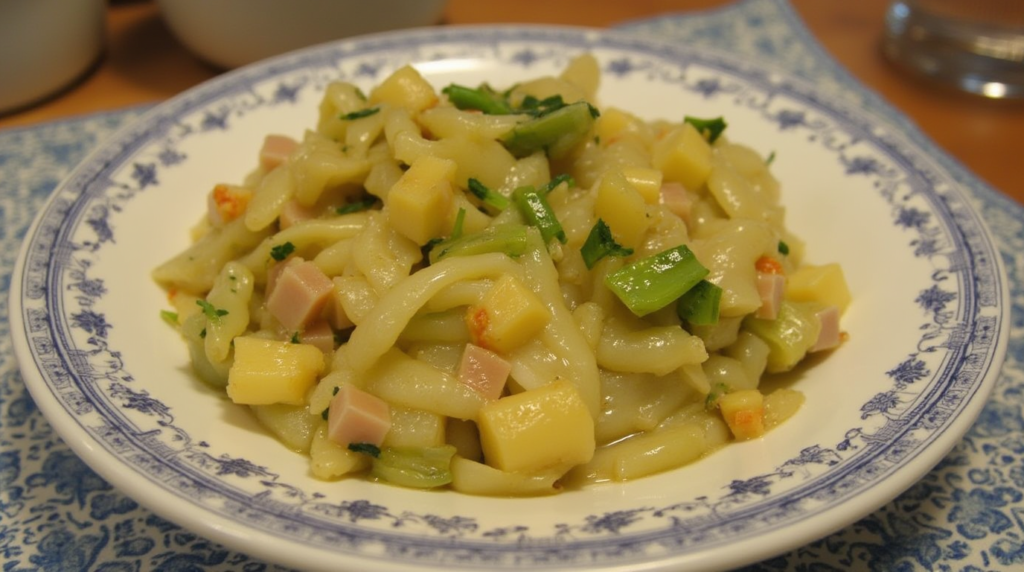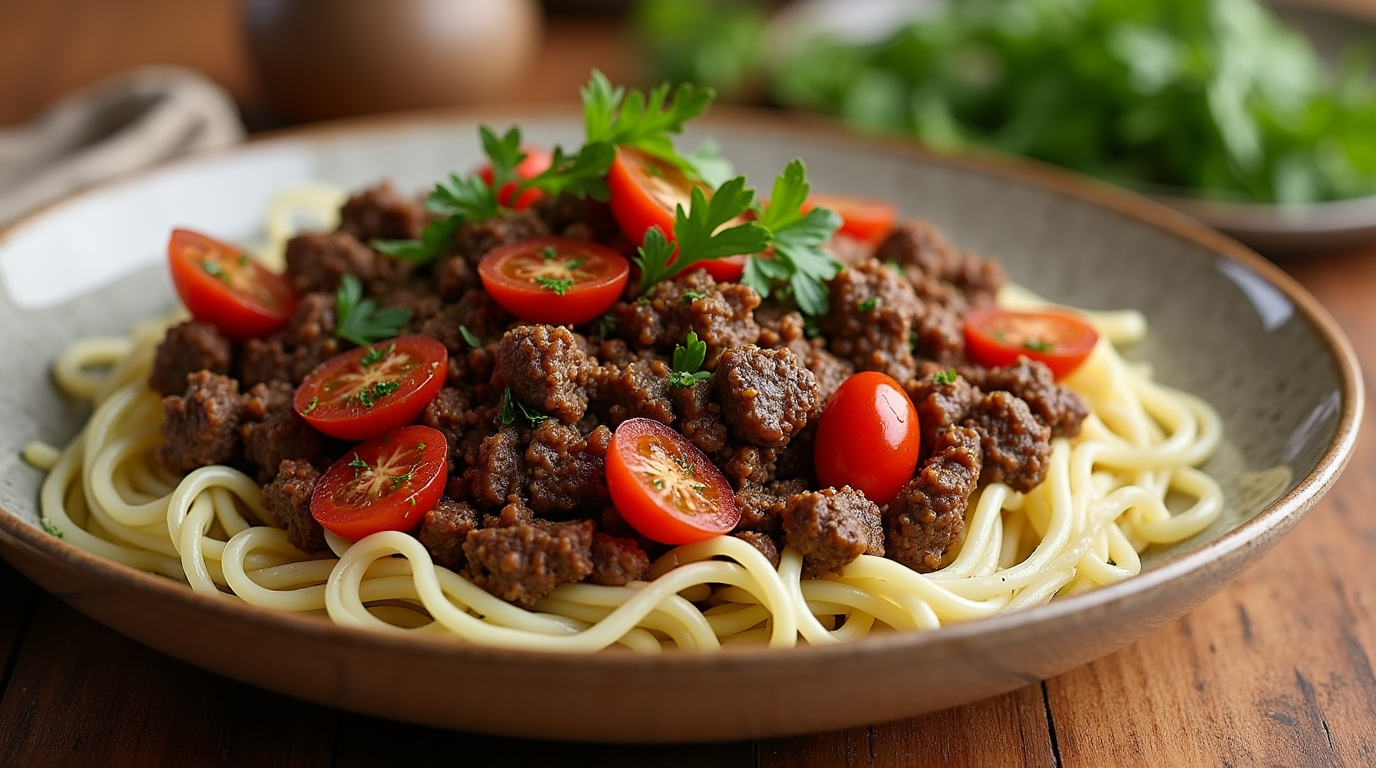Napa cabbage recipes , with its delicate, slightly sweet leaves and crisp texture, is a versatile ingredient that has found its way into kitchens around the world. Whether it’s the star of a hearty stir-fry, the crunchy base of a refreshing salad, or the key component in fermented dishes like kimchi, napa cabbage brings a unique flavor and nutritional boost to any meal. In this blog, we’ll explore the rich cultural heritage of napa cabbage, share tips for preparing it to perfection, and guide you through a delicious recipe that will make this humble vegetable the highlight of your table.

Table of Contents
Key Takeaways
- Napa cabbage is a staple in Asian cuisine, particularly in Chinese, Korean, and Japanese dishes.
- It’s rich in vitamins A, C, and K, as well as fiber, making it a nutritious addition to your diet.
- Napa cabbage can be used raw, cooked, or fermented, offering endless culinary possibilities.
- Traditional recipes often feature garlic, ginger, soy sauce, and chili for bold, umami flavors.
- Pair napa cabbage with proteins like tofu, chicken, or pork for a balanced meal.
Cultural Heritage of Napa Cabbage
Napa cabbage, also known as Chinese cabbage, has been cultivated in China for over 1,500 years. It’s a cornerstone of East Asian cuisine, featuring prominently in dishes like kimchi (Korea), hot pot (China), and okonomiyaki (Japan). In Korean culture, kimchi—a fermented napa cabbage dish—is more than just food; it’s a symbol of heritage and community. Families often gather to make large batches of kimchi, a tradition known as kimjang. Napa cabbage’s mild flavor and adaptability have also made it a favorite in Western kitchens, where it’s used in salads, soups, and slaws.

Essential Ingredients for Napa Cabbage Recipes
The beauty of napa cabbage lies in its ability to absorb and complement a wide range of flavors. Here are the key ingredients you’ll often find in napa cabbage recipes:
- Napa cabbage: The star of the dish, providing a crisp texture and mild sweetness.
- Garlic and ginger: Add depth and warmth to the flavor profile.
- Soy sauce or tamari: Brings umami and saltiness.
- Chili flakes or gochugaru (Korean chili powder): Adds a touch of heat.
- Sesame oil: Enhances the dish with its nutty aroma.
- Rice vinegar or lime juice: Provides a bright, tangy contrast.
Preparation and Marination Techniques
To make the most of napa cabbage’s texture and flavor, follow these preparation tips:
- Wash thoroughly: Rinse the leaves under cold water to remove any dirt or grit.
- Cut properly: For stir-fries, slice the cabbage into bite-sized pieces. For salads or kimchi, cut it into thin strips.
- Salt for crunch: If using raw, sprinkle with salt and let it sit for 10-15 minutes to draw out moisture and enhance crispness. Rinse and pat dry before using.
- Marinate for flavor: For dishes like kimchi, marinate the cabbage in a spicy, tangy brine for several hours or days to develop complex flavors.
Secret to Authentic Seasoning
The magic of napa cabbage recipes lies in the balance of flavors. Traditional seasoning blends often include:
- Soy sauce, garlic, and ginger: A classic trio that adds savory depth.
- Gochugaru (Korean chili powder): Essential for kimchi, providing heat and vibrant color.
- Sesame oil and seeds: Add a nutty, toasty finish.
- Rice vinegar or lime juice: Brightens the dish and balances richness.
Step-by-Step Cooking Method: Napa Cabbage Stir-Fry
Here’s a simple yet flavorful stir-fry recipe to get you started:
Ingredients:
- 1 medium napa cabbage, sliced
- 2 cloves garlic, minced
- 1-inch piece ginger, grated
- 2 tbsp soy sauce
- 1 tbsp sesame oil
- 1 tsp chili flakes (optional)
- 1 tbsp vegetable oil
- 1 tbsp sesame seeds (for garnish)
Instructions:
- Heat the oil: In a large skillet or wok, heat vegetable oil over medium-high heat.
- Sauté aromatics: Add garlic and ginger, stirring for 30 seconds until fragrant.
- Add cabbage: Toss in the sliced napa cabbage and stir-fry for 3-4 minutes until slightly wilted but still crisp.
- Season: Drizzle with soy sauce, sesame oil, and chili flakes (if using). Stir to combine.
- Garnish: Sprinkle with sesame seeds and serve immediately.
Common Mistakes to Avoid
- Overcooking: Napa cabbage should retain some crunch. Avoid cooking it until it’s mushy.
- Skipping the salt step: If using raw, salting the cabbage helps remove excess moisture and enhances texture.
- Overloading the pan: Cook in batches if necessary to ensure even cooking.
- Using too much sauce: Napa cabbage has a delicate flavor that can be overwhelmed by heavy sauces.
Traditional Side Dishes & Accompaniments
Napa cabbage dishes pair beautifully with:
- Steamed rice: A simple base to soak up flavorful sauces.
- Grilled meats or tofu: Adds protein and makes the meal more filling.
- Pickled vegetables: Provides a tangy contrast.
- Miso soup: A warm, comforting addition to any meal.
Storage and Reheating Guidelines
To keep your napa cabbage dishes fresh:
- Store in an airtight container in the fridge for up to 3 days.
- Avoid freezing: Napa cabbage becomes watery when thawed.
- Reheat gently: Use a skillet or microwave to warm leftovers, adding a splash of water or broth to prevent drying out.
Conclusion
Napa cabbage is a culinary gem that deserves a place in your kitchen. Whether you’re making a quick stir-fry, a tangy salad, or a batch of homemade kimchi, this versatile vegetable offers endless possibilities. We hope this guide inspires you to try a new napa cabbage recipe and explore its rich cultural heritage. Don’t forget to share your creations and tips in the comments below—we’d love to hear from you!
FAQ Section
Q: What’s the difference between napa cabbage and regular cabbage?
A: Napa cabbage has oblong, crinkly leaves and a milder, sweeter flavor compared to the round, dense heads of green or red cabbage.
Q: Can I use napa cabbage raw?
A: Absolutely! It’s great in salads, slaws, or as a crunchy wrap for fillings.
Q: How do I make kimchi with napa cabbage?
A: Kimchi involves salting the cabbage, then fermenting it with a spicy paste made from garlic, ginger, gochugaru, and fish sauce or soy sauce.
Q: Is napa cabbage healthy?
A: Yes, it’s low in calories and packed with vitamins, minerals, and antioxidants.
Q: Can I substitute napa cabbage in recipes?
A: While it has a unique texture, you can use green cabbage or bok choy as alternatives in most recipes.


